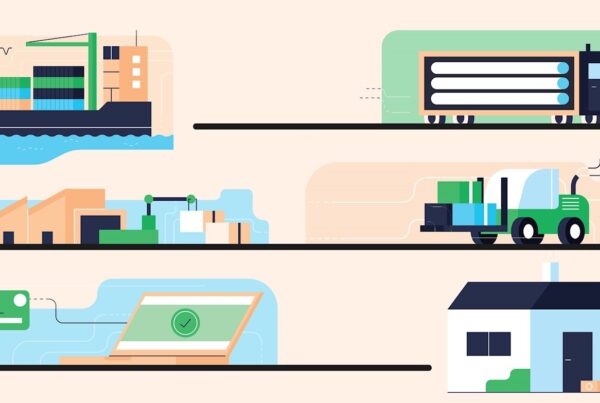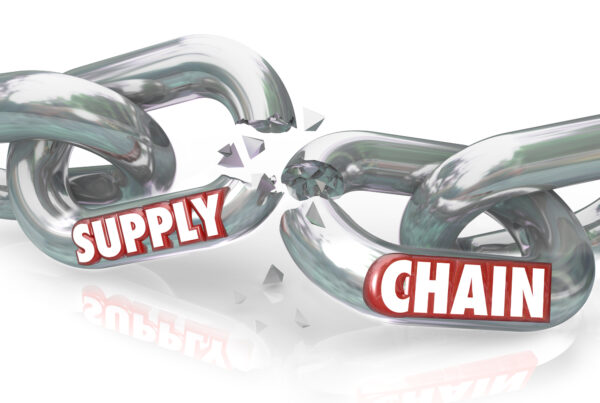
The Battle Of Copenhagen – April 12, 1801, is probably a historical event you have heard about. However, do you know what happened, why, and the close alignment this event has with vessel visibility and successful supply chain management of today?

During the 1790s, relationships between the Baltic States and Great Britain were relatively stable. However, a radical decision was about to shape history. In December 1800, Russia and Denmark joined to form ‘The Northern Convention,’ an ‘armed neutrality’ orchestrated by Russian Tsar, Paul I (1754-1801), seeking to forge closer links with Napoleon. With Russia’s strength of leadership, the other Baltic states had no choice but to follow suit.
Russia, Prussia, Sweden, and Denmark formed a coalition to protect their shipping rights and cut Great Britain’s supplies of timber and other vital naval products imported from the Baltics.
Let The Battle Begin!

In March 1801, Great Britain retaliated, and a fleet of vessels sailed from Great Yarmouth, under the command of Admiral Sir Hyde Parker (1739-1807) with Horatio Nelson (1758-1805) as second in command. The fleet reached Denmark March 21, 1801, but 29,000 troops and more than 400 warships and transports failed to find a peaceful solution. On April 2, Nelson, onboard HMS Elephant, led 12 ships into battle.
Later, Nelson was to report the battle to be the most challenging action he had ever fought. The Danes had fortified their city well, and the British fleet lacked visibility, and accountability which resulted in ships running aground due to lack of nautical maps and shallow waters.
‘I See No Ships!’
With more and more of the British fleet succumbing to extensive damage, Sir Hyde Parker sent a signal – his command for the fleet to retreat immediately. It’s unknown whether Nelson ignored this direct order or whether Hyde Parker, who was reputedly not present, provided a ‘get out clause’ for his subordinate. Still, legend has it that when the signal got reported to him, he raised his telescope to his blind eye and professed ‘I really do not see the signal‘ – not quite ‘I see no ships’ as we are led to believe but not far off!
 Source: History Today Volume 61 Issue 4
Source: History Today Volume 61 Issue 4
Nelson’s courage and leadership capabilities enabled him the determination to fight on until he saw a weakening in the Danish line and so sent a letter under the flag of truce, addressed to ‘The Brothers Of English Men, The Danes‘ to the Danish Crown Prince.
The Danes, who had found themselves involved in a situation they didn’t want to be, and Great Britain got forced to take responsive action. The countries agreed on a truce, and the fighting subsequently ceased.
Communication Is Key
However, Parker and Nelson could have avoided the loss of many ships and lives if the 18th Century communication system was quicker and more efficient! The Russian Tsar, Paul I, was assassinated March 13, 1801, which likely would have resulted in the armed neutrality having collapsed as a result anyway!
Risk And Disruption

Collectively, supply chain managers often hold similar ‘eyepieces’ to their blind eye. Failing to identify risks and disruptions through lack of visibility, traceability, and accountability that are provided not only at vessel level but now down to individual SKU level through cleverly designed and easily deployed software solutions such as those provided by the Gravity platform.
Shipment Tracker
![]()
Gravity’s Deliver Module is renowned within the industry for its ability to provide real time shipment visibility with benefits such as:
- Providing complete control over the booking to receipt process
- Reducing time and handling costs
- Delivering better customer service and flexibility to respond to changing demand
- Enabling integration with operating systems and industry partners
- Pre-configured integrations with over 100 ocean carriers and 900 airlines
- Controlled access for customers, agents, and trading partners
- Supporting the inbound/outbound logistics network for end-to-end visibility and collaboration
- An agile, scalable platform
- End-to-end global shipment visibility and track-and-trace
- A Private-label web portal that provides visibility to agents, brokers, and customers
- Dashboard style visibility and reporting via key metric reporting
- Milestone driven workflow according to specific procedures
- Real time exception management and notification that places focus on at-risk shipments
- Its ability to integrate operating systems and financial accounting systems
- ‘Out of the box’ data integrations that ensure productivity and avoid redundant data entry
The Benefits
Would you like to learn more about Gravity’s deliver module,and how you can enjoy all the benefits enabled by the latest in global logistics visibility platforms and digitize your supply chain for as little as $500 per month without any upfront fees or hidden costs to worry about?
Imagine the benefits of:
- Standard ST tiles
- Volume-based analytical tiles
- Gravity Branding
- Container Tracker as Standard
- AWB Tracking as Standard
- Monthly Only Fee – US$500
- Quick adoption – Pay by Credit Card, Stop When You Want!
- Max volume – 150 jobs per month
What’s likely to be even more alluring is you can have all this for as little as $3 per job! Get in touch!




